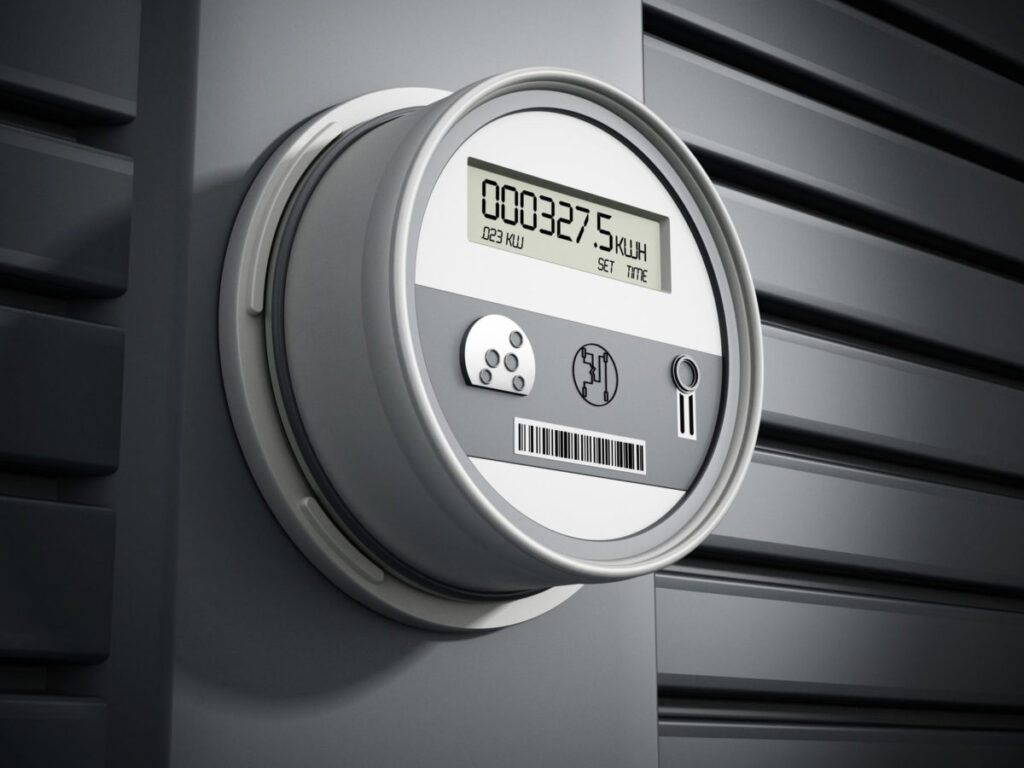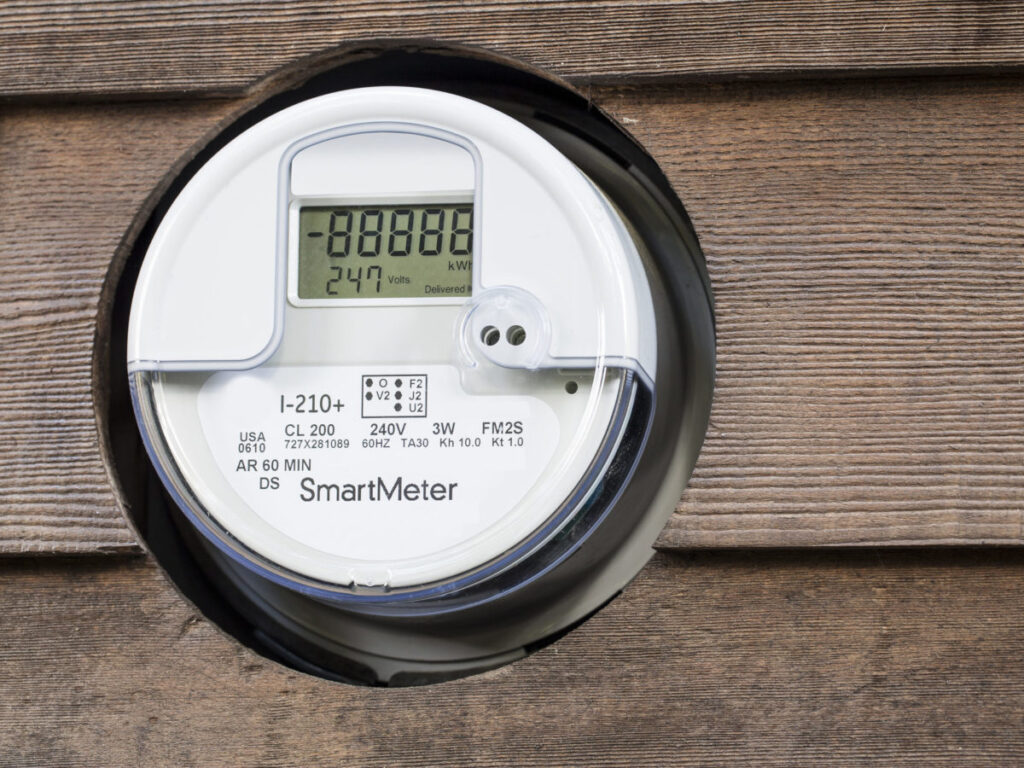Applying metering analytics to common distribution challenges

A strong first step is to focus on analyzing metering data. Of course, this requires an advanced metering infrastructure (AMI) which most utilities have or are in the process of deploying. Close to 60% of residential meters now can communicate multiple values, including interval consumption and voltage data. As of 2016, utilities had deployed over 72 million smart meters and those numbers continue to grow.
Smart meters are significantly more capable than traditional meters, with the ability to measure and transmit many parameters, including:
- Interval consumption measurements, such as kWh, kVArh, kVAh
- Interval voltage measurements, including peak, average and instantaneous voltage, as well as voltage sags and swells
- Meter temperature
- Power outage and restoration
- Momentary outage
- Meter tampering
Some meter events, such as outage and restoration, are transmitted upon detection because of the time-sensitive nature of their purpose. Measurements such as interval consumption are typically collected at 15 minute or hourly frequencies and transmitted every few hours. Meter data improves visibility into the edge of the electric system, directly impacting a wide range of utility operations.
Metering and Grid Analytics
Meter data can be integrated with other enterprise systems used by utilities, such as their geographical information system (GIS), customer information system (CIS) and outage management system (OMS) to expand AMI benefits across the organization. Holistic grid analytics uses data collected from these systems and other distribution devices, such as line sensors and distribution automation equipment, to support a broad range of operational objectives, including:
Customer Service
Since meters are deployed at customer premises, the data can be used to improve customer service. These include notifications of power outages and restorations, analysis of power quality at the premise, and recommendations on improving energy efficiency.
Reliability
Power outage and restoration events captured by the meter can be used to improve restoration time and reliability metrics. Similarly, momentary outages and other power quality indicators can be used to prevent future outages by highlighting failing equipment, vegetation issues, and preventative maintenance strategies.
Ratemaking
Interval consumption measurements are traditionally used only for billing purposes. But this data can also be used to design new rate structures based on analyzing the capacity contribution of various customer types at system peaks as well as overall consumption.
Revenue Protection
The granularity of the data collected by smart meters allows for consumption pattern analyses to support the detection of theft and malfunctioning meters. Meters can also be aggregated and compared to upstream monitor to detect abnormal divergence or better quantify technical loss.
Asset Management
Integrating meter consumption measurements with the connectivity and electrical model allows for power flow analyses to be conducted across the asset base under various loading conditions. These results give utilities a better gauge of which assets are over or underloaded, essentially expanding the benefits of metering to non-metered assets such as conductors, distribution transformers and protection devices. In addition to reducing technical loss, premature asset failure and unplanned outages, this level of clarity leads to more accurate management of inventory levels.
Distributed Energy Resource (DER) Integration
Customer-owned photovoltaic systems impact both utility operations and revenue. Sudden changes in power demand at the customer level, overall consumption reduction, varying voltage levels, and increasing demand on equipment are all possible side effects. Data from meters and distribution sensors help measure the impact of DER on the distribution system. The utility is able to estimate feeder capacity to host DER and gauge the impact of mitigating strategies such as the deployment of utility-controlled energy storage to mitigate the technical issues that may arise.
Although there are multiple benefits for utilities to leverage their data sources for an integrated analytics approach, meter analytics alone can yield substantial value for utilities.
Meter Analytics Use Cases
Early adopters of AMI soon realized that billing data was only part of the value equation. Data obtained from the meter, combined with event information, provides answers to several questions and challenges grid operators regularly face. The following use cases highlight the most common examples.
Power Quality Monitoring
Smart meters measure multiple parameters related to power quality. These include momentary outage events and voltage sag or swell excursion, as well as average voltage falling outside of the acceptable operating range. Power quality issues are not only precursors of impending faults, but also can cause serious issues — from damaging customer appliances and electronics to disrupting industrial activity. The cost and impact of these issues become graver when critical customers, such as hospitals, police stations and large industrial customers are impacted.
The visibility into system performance produced by the assortment of metrics, recording interval and transmission frequency of the smart meter bolsters a utility’s ability to address these issues prior to inconvenient situations devolving into serious conditions. For example, over voltages reported by a majority of meters connected to the same transformer may indicate that the transformer is about to fail. Likewise, a large number of voltage sags and swells or momentary outages reported by multiple meters on the same lateral feeder may indicate a tree is contacting the main conductor.
Response to these power quality issues can range from rectifying regulator control settings to replacing distribution transformers to prioritizing areas for vegetation management. Early detection of power quality issues gives utilities more opportunities to strategize and better orchestrate their operations to prevent impacts on their customers and reduce the cost and burden caused by unplanned outages. This, in turn, results in better conformity to regulatory guidelines, asset management and customer satisfaction.
Revenue Protection
Consumption measurements obtained from meters are used to generate bills. Ensuring these measurements reflect actual customer consumption prevents revenue loss to the utility. Consumption measurement errors can occur because of:
- Incorrect meter configuration –Meters may have been assigned erroneous configuration parameters, such as load multipliers and rate codes.
- Defective meter – Hardware defects can cause measurement errors such as stale or missing measurements and very low or high values.
- Power theft – Industry estimates for power theft range from 1 to 3% across the United States. Theft occurrence elsewhere is reported as being much higher, especially in developing countries.
There are various ways consumption data can be used to detect these issues. A hardware-intensive approach consists of an aggregation of meter consumption profiles and comparison to a primary-side meter upstream. Approaches at the meter level consist of analyzing consumption and voltage measurements, as well as events reported by meters.
Detection of abnormal consumption patterns, abnormalities in relationship between consumption and voltages, and combining these with various types of meter reported events enable utilities to identify and resolve issues more quickly. For example, a meter reporting the same consumption value over very long periods of time may indicate a defective meter. Similarly, a meter reporting larger consumption values than a premise of that type typically consumes may indicate a meter configuration error. A meter with multiple outage events in a short period followed by sudden decrease in consumption may indicate power theft.
Capacity Contribution
Periods of high system demand often require utilities to purchase energy at premium prices or bring expensive peaking generator units in service. Because the system peak demand is used to gauge the adequacy of a utility’s distribution power capacity, periodic demand can drive costly construction projects to support peak requirements.
To reduce peak loading, it is critical to understand which customers are contributing to the peak load and their consumption patterns. Annual, seasonal, and daily peak demand periods can be identified at the system level so the relative contribution from individual meters can be determined. This information supports the design of rate structures based on customer demographics and consumption patterns, as well as the focus and quantification of demand response programs and energy efficiency initiatives. For example, special rate structures could be designed to discourage consumption during peak loading periods and financial incentives may be offered for demand management programs. This type of analysis enhances the demand management tools available to the utility by providing greater precision in how to apply those tools to achieve results.
SAIDI Calculation
Outage durations and customer impact are traditionally determined based on reports from customers experiencing outages and field reports from work crews. With the advent of AMI and automated outage and restoration events, along with voltage interval measurements’ analysis reported by the meter can yield far more accurate metrics because the information is measured and reported at the premise level.
Through analyzing the sequence of outage is alarming, it helps in preparation for the required restoration effort in the field. Additionally, by aligning the restoration alarms with the system model, one can ensure that they are focused on maximizing the restoration effort on trouble tickets with the greatest number of consumers, while minimizing callbacks for nested outages. This, of course, has a significant impact to the SAIDI numbers for any utility.
Events and measurements generated by modern smart meters provide unprecedented visibility into the edge of the utility infrastructure. Visualization and analytics of this rich set of information provide utilities with multiple benefits that impact revenue, reliability and power quality. The payoff is improved customer satisfaction and revenue for utilities. When integrated with other utility enterprise systems, meter data can provide even higher returns to asset management and reliability, while helping utilities manage an ever-changing distribution system.
Frederic Dubois is a senior product manager at Landis+Gyr.





